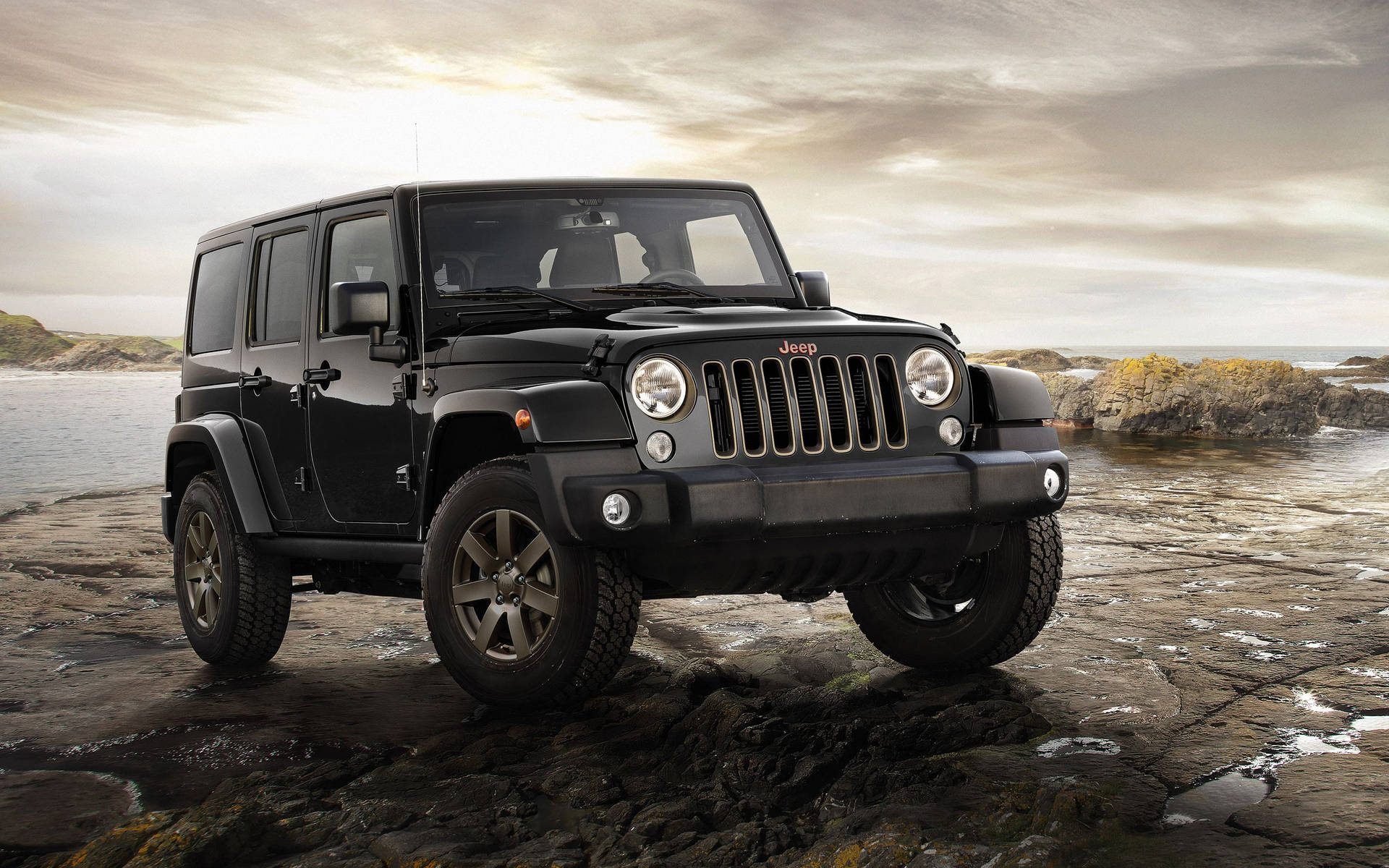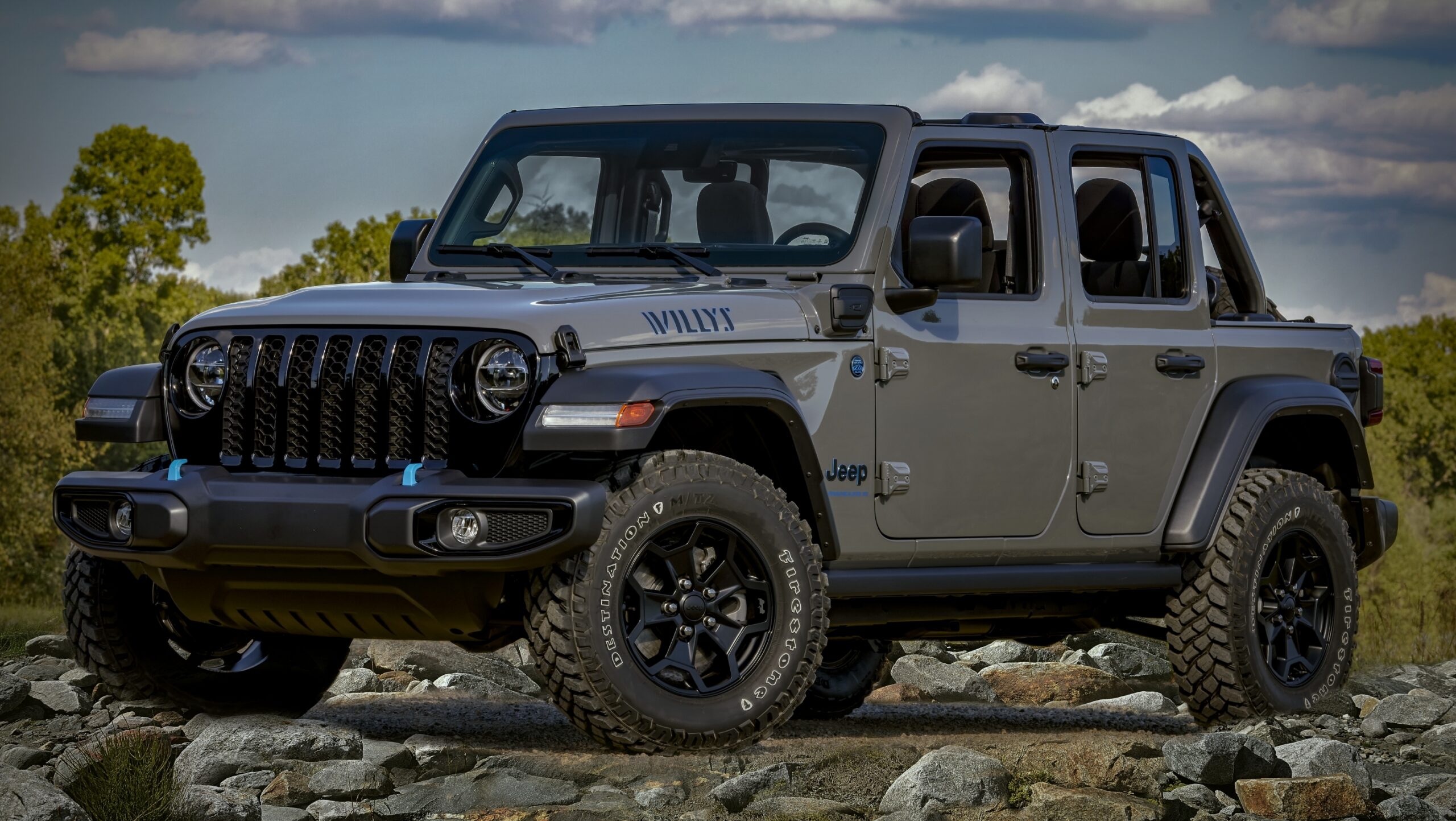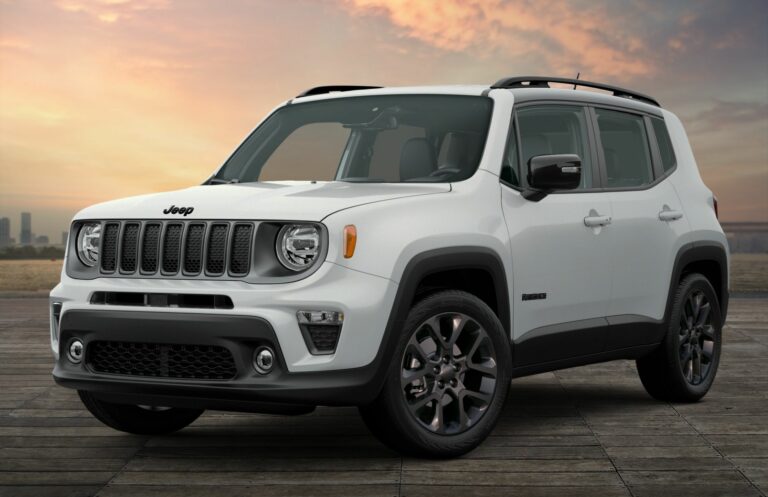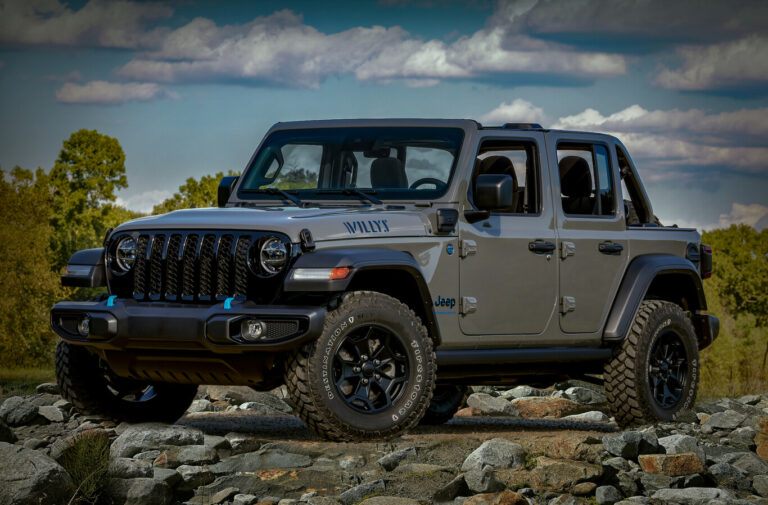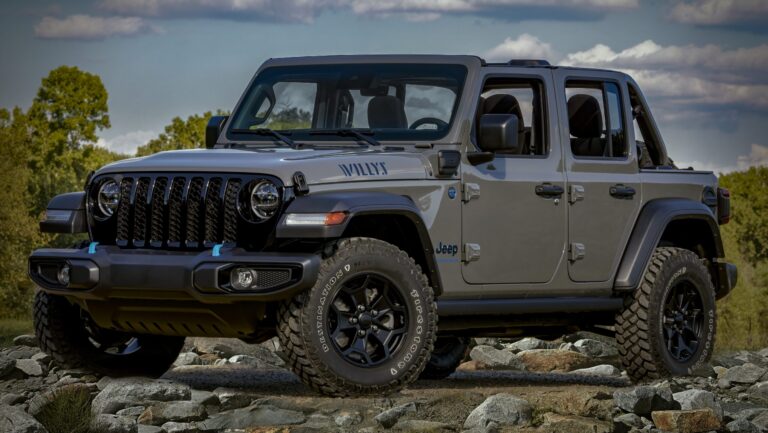Jeep L 134 Engine For Sale: A Comprehensive Buyer’s Guide to the Legendary "Go-Devil"
Jeep L 134 Engine For Sale: A Comprehensive Buyer’s Guide to the Legendary "Go-Devil" jeeps.truckstrend.com
In the realm of classic military and civilian vehicles, few engines command as much respect and nostalgic appeal as the Willys L-134, affectionately known as the "Go-Devil." This venerable flathead inline-four engine powered the iconic World War II Willys MB and Ford GPW Jeeps, as well as the early post-war civilian CJ series. For enthusiasts, restorers, and collectors, finding a Jeep L-134 engine for sale isn’t just about acquiring a piece of machinery; it’s about connecting with a pivotal chapter in automotive history and ensuring the continued legacy of these enduring vehicles.
This comprehensive guide will delve into everything you need to know about purchasing a Jeep L-134 engine, from understanding its heritage and types available to navigating the market, assessing condition, and making an informed decision. Whether you’re undertaking a meticulous restoration, seeking a reliable replacement, or simply chasing a piece of automotive legend, this article is designed to equip you with the knowledge and practical advice necessary for a successful acquisition.
Jeep L 134 Engine For Sale: A Comprehensive Buyer’s Guide to the Legendary "Go-Devil"
Understanding the L-134 "Go-Devil" Engine: A Legacy of Reliability
The L-134 engine, named for its L-head (flathead) design and 134 cubic inches of displacement, was a marvel of engineering simplicity and rugged reliability for its time. Developed by Willys-Overland in the late 1930s, it truly earned its "Go-Devil" moniker during World War II, powering the legendary Jeeps that became indispensable tools for Allied forces. Its design, featuring side-mounted valves and a cast-iron block, was inherently robust, easy to manufacture, and remarkably tolerant of varied fuel qualities and challenging conditions.
Key Characteristics:
- Engine Type: Inline 4-cylinder, L-head (flathead, side-valve)
- Displacement: 134.2 cubic inches (2.2 liters)
- Horsepower: Approximately 60 hp at 4,000 rpm
- Torque: Around 105 lb-ft at 2,000 rpm
- Fuel System: Single downdraft carburetor (usually Carter WO)
- Cooling: Water-cooled

The L-134’s enduring appeal lies in its straightforward mechanics, which make it relatively easy to maintain, diagnose, and rebuild even by today’s standards. It’s not a powerhouse by modern metrics, but its low-RPM torque characteristics were perfectly suited for the Jeeps’ off-road capabilities and utilitarian tasks. It powered a range of vehicles, including the Willys MB, Ford GPW, Willys CJ-2A, CJ-3A, CJ-3B, M38, and early M38A1 military Jeeps, making it a cornerstone for many vintage Jeep projects.
Why Buy a Jeep L-134 Engine Today?

The decision to purchase an L-134 engine in the 21st century is driven by several factors, predominantly rooted in the desire to preserve automotive history and ensure the longevity of these classic machines.
- Authentic Restoration Projects: For purists, a period-correct L-134 is non-negotiable for an authentic restoration of a WWII Jeep or early CJ. It ensures the vehicle looks, sounds, and performs as it originally did.
- Replacement for a Non-Functional Engine: If your classic Jeep’s original L-134 is beyond economical repair, or missing entirely, a replacement engine is essential to bring it back to life.
- Spares and Future-Proofing: Enthusiasts often acquire spare engines or components for future maintenance, repairs, or as a contingency against unexpected breakdowns.
- Nostalgia and Passion: For many, owning an L-134 engine is about connecting with a piece of personal or historical significance, appreciating its engineering, and the stories it represents.
- Simplicity and Maintainability: Compared to complex modern engines, the L-134’s mechanical simplicity makes it appealing for those who enjoy hands-on work and desire an engine that can be maintained with basic tools and knowledge.
![]()
Where to Find a Jeep L-134 Engine For Sale
The market for vintage automotive parts is diverse, and finding an L-134 engine requires a strategic approach. Here are the most common avenues:
- Online Marketplaces:
- eBay: A vast marketplace where you can find everything from complete running engines to core components. Use specific search terms like "Willys L-134 engine," "Jeep Go-Devil engine," or "CJ-2A engine."
- Craigslist/Facebook Marketplace: Excellent for local finds, potentially saving on shipping costs. Be cautious of scams and always try to inspect in person.
- Specialized Forums & Groups: Websites like G503.com (military Jeep forum), WillysTech.com, and various Facebook groups dedicated to vintage Jeeps are goldmines. Members often sell parts directly, and the community can offer valuable advice.
- Specialized Classic Jeep Parts Dealers: Several companies specialize in vintage Jeep parts, often offering rebuilt engines or high-quality cores. These sources typically provide better assurance of quality and sometimes offer warranties. Examples include Walck’s 4WD, Kaiser Willys Auto Supply, and others.
- Salvage Yards/Auto Wreckers: While less likely to yield a complete, running L-134, some older yards might have abandoned Jeeps from which you can source parts or even a core engine. This requires more legwork.
- Estate Sales & Auctions: Keep an eye on local estate sales, farm auctions, or specialized automotive auctions. You might uncover hidden gems, often from long-held collections.
- Word of Mouth & Car Clubs: Networking with local classic car or Jeep clubs can be incredibly effective. Members often know who has what for sale, or can point you to reliable sources.
Types of L-134 Engines Available and What to Look For
Engines listed for sale will fall into several categories, each with different price points and implications for your project. Understanding these categories is crucial for setting expectations and budgeting.
- Core/As-Is Engine:
- Description: Typically non-running, possibly seized, incomplete, or heavily corroded. These are often pulled from derelict vehicles.
- Purpose: Intended for a complete professional rebuild. You’re buying the basic block, head, and crankshaft, hoping they are salvageable.
- What to Look For: Visible cracks in the block or head, severe rust, missing critical components (crankshaft, camshaft, valves). A seized engine can sometimes be freed, but indicates significant internal issues.
- Rebuildable Core:
- Description: An engine that turns over (not seized), but requires a full rebuild. It may be incomplete or have unknown internal wear.
- Purpose: For a DIY rebuild or sending to a machine shop. Offers a better starting point than a fully seized core.
- What to Look For: Does it turn over by hand? Are the main components present? Any signs of external damage? Ask about its history – why was it pulled?
- Running Take-Out (RTO):
- Description: An engine pulled from a vehicle that was running at the time of removal. Condition can vary wildly, from barely running to strong.
- Purpose: Could be a temporary drop-in, or a candidate for a light refresh rather than a full rebuild.
- What to Look For: Crucially, ask for video evidence of it running before removal. Inquire about oil pressure, smoke from the exhaust, knocks, or unusual noises. Check for leaks, excessive blow-by, and condition of ancillaries (carburetor, distributor, generator).
- Professionally Rebuilt/Remanufactured Engine:
- Description: An engine that has been fully disassembled, inspected, machined, fitted with new components (pistons, rings, bearings, valves, seals), and often tested.
- Purpose: A ready-to-install solution for those who want reliability without the hassle of a rebuild.
- What to Look For: Ask for documentation of the rebuild (what was done, what parts were replaced). Inquire about a warranty. Check the reputation of the rebuilder. While more expensive, this option offers the most peace of mind.
Important Considerations Before Purchasing
Before you commit to a purchase, take these critical factors into account:
- Budget: Be realistic about the total cost. A cheap core can quickly become expensive after machining, parts, and labor. A professionally rebuilt engine, while costly upfront, can save you significant time and potential headaches.
- Project Scope: Are you capable of a full engine rebuild, or will you need to pay a machine shop? This dictates what type of engine you should seek.
- Shipping & Logistics: L-134 engines are heavy. Factor in freight shipping costs, which can be substantial, especially for cross-country or international transport. Local pick-up is always preferred if possible.
- Verification: Always verify the seller’s claims. Ask for high-resolution photos from multiple angles, and if possible, a video of a running engine. Never send money without clear verification and a trusted payment method.
- Ancillaries: Does the engine come complete with its carburetor, distributor, generator, starter, manifolds, flywheel, and bell housing? These components can add significant cost if purchased separately.
- "Matching Numbers": For high-end restorations, some purists seek engines with casting dates or serial numbers that align with their vehicle’s production date. This is a niche concern but can affect value.
Practical Advice for Buyers
- Do Your Research: Understand the minor variations of the L-134 (e.g., civilian vs. military, early vs. late production). While largely similar, small differences exist.
- Ask Detailed Questions: "What is the engine’s history?" "Why was it removed?" "Has it been stored dry or wet?" "Are there any known issues?" "Can you provide a compression test (if running)?"
- Get Visual Evidence: Request photos of the engine from all sides, showing critical areas like the block, head, oil pan, and manifold ports. Ask for photos of the oil pan removed if possible to check for sludge or bearing material.
- Consider a Pre-Purchase Inspection: If the engine is local, and you’re not an expert, consider hiring a knowledgeable mechanic or asking an experienced friend to accompany you for an inspection.
- Negotiate: Most prices, especially for used parts, are negotiable. Don’t be afraid to make a reasonable offer, especially if you’re paying cash.
- Factor in Hidden Costs: Assume any used engine will need at least a refresh, if not a full rebuild. Budget for new gaskets, seals, and potentially major machine work.
Challenges and Solutions
- Finding a Good Core: Many L-134 engines available as "cores" are severely worn, cracked, or seized.
- Solution: Be patient. Expand your search beyond local listings. Network with restorers who might have surplus engines from their projects.
- High Shipping Costs: Heavy engines mean expensive freight.
- Solution: Prioritize local pickup. Get multiple freight quotes. Consider purchasing from a vendor closer to you.
- Hidden Problems: You can’t always know what’s inside without disassembly.
- Solution: Assume the worst and budget for a full rebuild, even if it’s a "running take-out." This way, any pleasant surprises are a bonus.
- Scams/Misrepresentation: Unfortunately, online marketplaces can attract dishonest sellers.
- Solution: Stick to reputable dealers where possible. For private sales, use secure payment methods that offer buyer protection (e.g., PayPal Goods & Services, if applicable). Avoid wire transfers. Get a bill of sale.
- Parts Availability: While many L-134 parts are readily available, some specific components can be harder to source.
- Solution: Research parts availability before buying a core. Specialized classic Jeep suppliers are your best bet.
Jeep L-134 Engine For Sale: Estimated Price Table
Please note that prices are highly variable based on condition, completeness, seller, and market demand. These are general estimates in USD as of late 2023 / early 2024.
| Engine Type/Condition | Estimated Price Range (USD) | Typical Condition Notes & What to Expect |
|---|
